Birdfinding.info ⇒ Endangered but still locally common on Kauai. Rare and local on Oahu and the Big Island. Reliable sites on Kauai include Hanalei National Wildlife Refuge, Kawai’ele Waterbird Sanctuary, Kauai Lagoons in Lihue, golf courses around Poipu, and Hanapepe. On Oahu, James Campbell National Wildlife Refuge is probably the most consistent site. On the Big Island, it is mostly limited to streams on the eastern slope of the Kohala mountains, including the Pololu and Waipio valleys, and sometimes visits ponds along the Mamalahoa Highway east of Waimea.
Hawaiian Duck
Anas wyvilliana
Endemic to Hawaii, and resident on Kauai, Oahu, and the Big Island, where it inhabits streams and ponds. Unlike many of its relatives, it often prefers mountain streams over shallow ponds.
Generally distributed throughout Kauai. On Oahu, it occurs mainly at the northern tip of the island, but sometimes appears at other wetland areas. On the Big Island, it is mostly limited to streams on the eastern slope of the Kohala mountains.
Extant populations are difficult to assess because of an indeterminate amount of hybridization with Mallards. The hybridization itself is difficult to assess because the Hawaiian Duck is somewhat variable and some individuals naturally resemble Mallards more than others do.
Estimates in the 2000s have been approximately 2,000 on Kauai and 100 each on Oahu and the Big Island.
Formerly also inhabited Ni’ihau, Molokai, and Maui.
Identification
A mottled-brown duck that resembles a female or eclipse-plumaged Mallard, with a speculum that varies across a wide spectrum from green to various shades of blue to purple.
The sexes are both generally hen-plumaged, but differ subtly from one another. In many cases, even with a clear view, both sexes appear entirely mottled-brown and they can be difficult to distinguish.
Male’s bill is dull-greenish, usually pale but sometimes dark. On most males the head and neck are paler brown than the body. Fully mature males have prominent white or whitish eyerings.

Hawaiian Duck, male with a purple speculum. (Ko Olina Beach Villa Resort, Honokai Hale, Oahu, Hawaii; August 6, 2012.) © Steven Mlodinow
Immature males often show some green on the head, which gives the appearance of Mallard hybridization—but is actually a natural feature of Hawaiian Duck.

Hawaiian Duck, immature male—note partly greenish head. (Ohiki Road, Hanalei National Wildlife Refuge, Kauai, Hawaii; March 4, 2019.) © Kathryn Hart
Females are typically paler brown overall than males and usually do not show a markedly paler head and neck nor a white eyering.
Female’s bill is mostly blackish with traces of dull-orange around the edges.
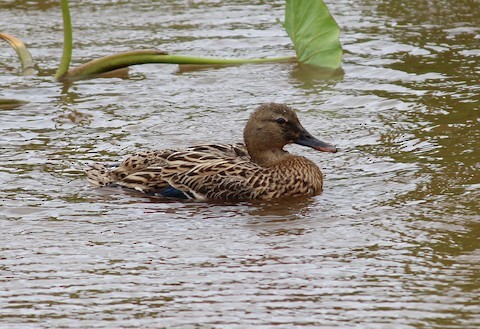
Hawaiian Duck, female. (Ohiki Road, Hanalei National Wildlife Refuge, Kauai, Hawaii; March 4, 2019.) © Kathryn Hart

Hawaiian Duck, male. (Hanalei National Wildlife Refuge, Kauai, Hawaii; August 30, 2007.) © Michael Walther
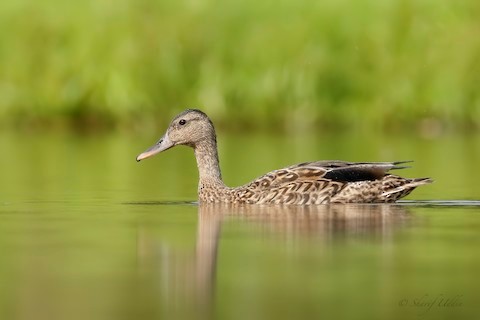
Hawaiian Duck, female. (Hanalei National Wildlife Refuge, Kauai, Hawaii; June 9, 2018.) © Sharif Uddin
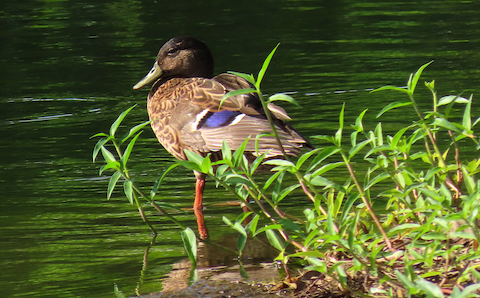
Hawaiian Duck, male with a purplish-blue speculum. (Hokuala Golf Course, Lihue, Kauai, Hawaii; October 19, 2019.) © Ted Floyd
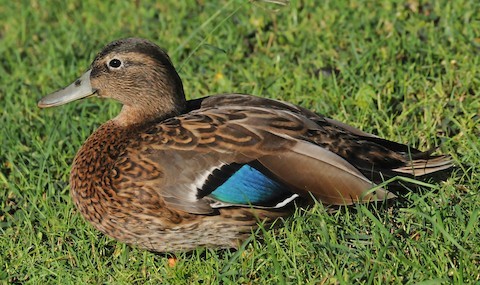
Hawaiian Duck, male with a turquoise speculum. (Ko Olina Beach Villa Resort, Honokai Hale, Oahu, Hawaii; August 6, 2012.) © Steven Mlodinow
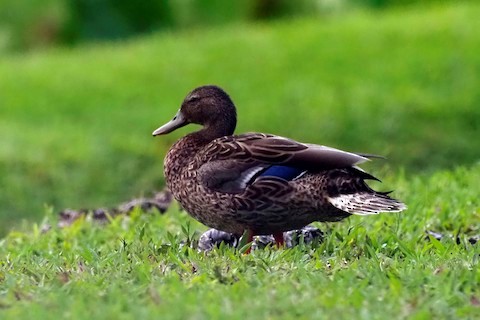
Hawaiian Duck, male with a deep-blue speculum. (Hanalei National Wildlife Refuge, Kauai, Hawaii; February 27, 2020.) © Donna Pomeroy
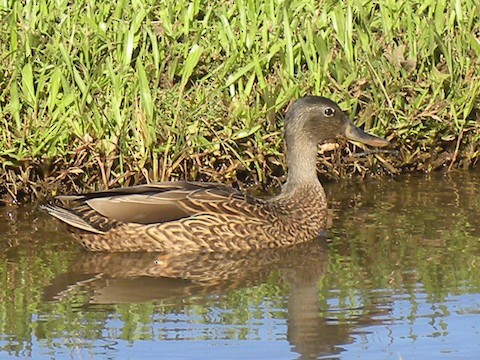
Hawaiian Duck, female. (Ohiki Road, Hanalei National Wildlife Refuge, Kauai, Hawaii; August 26, 2017.) © Cloyce Hedge
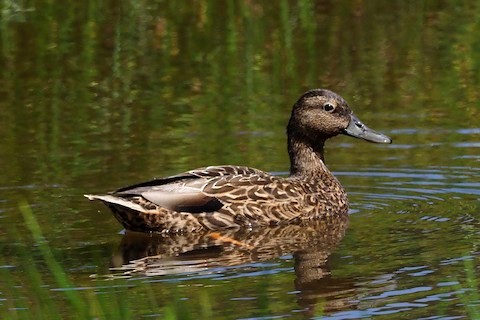
Hawaiian Duck, sex indeterminate. (Hanalei National Wildlife Refuge, Kauai, Hawaii; February 27, 2020.) © Donna Pomeroy
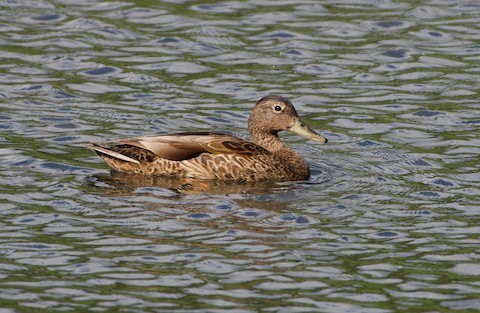
Hawaiian Duck, male—note white eyering and greenish bill. (Eleele, Kauai, Hawaii; April 14, 2019.) © Lizabeth Southworth

Hawaiian Duck, female with a blue-green speculum. (Ko Olina Beach Villa Resort, Honokai Hale, Oahu, Hawaii; August 6, 2012.) © Steven Mlodinow
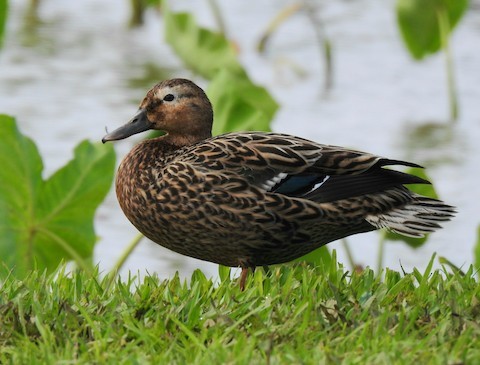
Hawaiian Duck, heavily marked but sex indeterminate. (Ohiki Road, Hanalei National Wildlife Refuge, Kauai, Hawaii; January 8, 2020.) © Joel Gilb
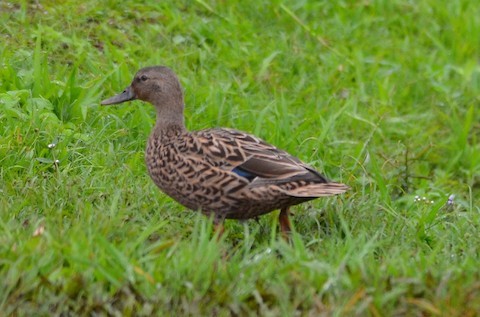
Hawaiian Duck, female. (Ohiki Road, Hanalei National Wildlife Refuge, Kauai, Hawaii; December 26, 2016.) © Kevin Lapp

Hawaiian Duck, female. (Ohiki Road, Hanalei National Wildlife Refuge, Kauai, Hawaii; April 4, 2017.) © Mel Senac
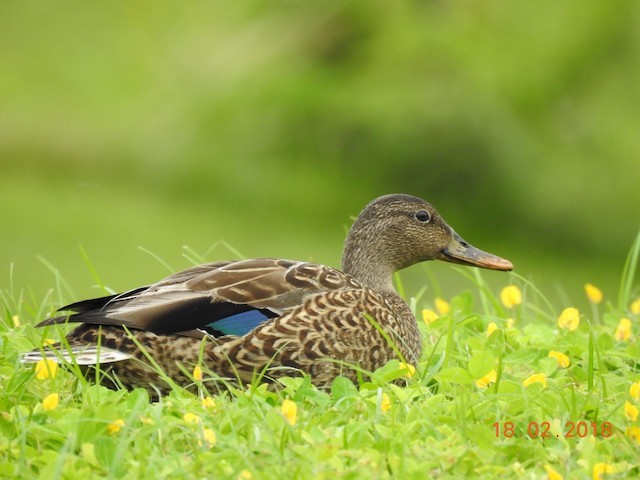
Hawaiian Duck, female with a deep-blue speculum. (McBryde Garden, Kauai, Hawaii; February 18, 2018.) © Euan Aitken
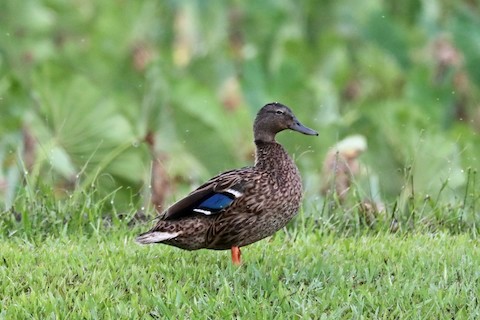
Hawaiian Duck, female with a blue speculum. (Hanalei National Wildlife Refuge, Kauai, Hawaii; September 11, 2018.) © Steve McInnis

Hawaiian Duck, an apparently dark individual of indeterminate sex. (Ohiki Road, Hanalei National Wildlife Refuge, Kauai, Hawaii; April 4, 2017.) © Mel Senac

Hawaiian Duck with a purplish speculum. (Ohiki Road, Hanalei National Wildlife Refuge, Kauai, Hawaii; March 22, 2017.) © Paul Prappas

Hawaiian Duck, male. (Hokuala Golf Course, Lihue, Kauai, Hawaii; February 29, 2020.) © Donna Pomeroy

Hawaiian Duck. (Kawaiele State Waterbird Sanctuary, Kauai, Hawaii; September 2, 2018.) © Barry Blust
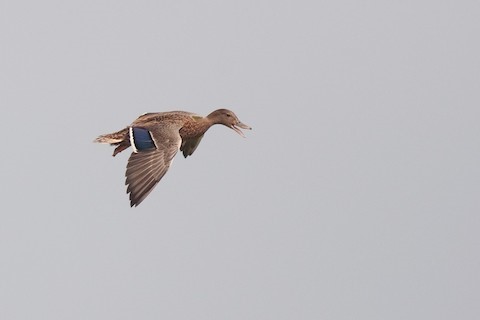
Hawaiian Duck. (Ohiki Road, Hanalei National Wildlife Refuge, Kauai, Hawaii; July 17, 2015.) © Etienne Artigau

Hawaiian Duck. (Kawaiele State Waterbird Sanctuary, Kauai, Hawaii; August 7, 2018.) © Joe Nirschl

Hawaiian Duck. (Kawaiele State Waterbird Sanctuary, Kauai, Hawaii; August 7, 2018.) © Joe Nirschl
Notes
Monotypic species.
IUCN Red List Status: Endangered.
References
BirdLife International. 2017. Anas wyvilliana (amended version of 2016 assessment). The IUCN Red List of Threatened Species 2017: e.T22680199A112386802. https://dx.doi.org/10.2305/IUCN.UK.2017-1.RLTS.T22680199A112386802.en. (Accessed June 7, 2020.)
eBird. 2020. eBird: An online database of bird distribution and abundance. Cornell Lab of Ornithology, Ithaca, N.Y. http://www.ebird.org. (Accessed June 7, 2020.)
Pratt, H.D., P.L. Bruner, and D.G. Berrett. 1987. A Field Guide to the Birds of Hawaii and the Tropical Pacific. Princeton University Press.
Pratt, H.D. 1993. Enjoying Birds in Hawaii: A Birdfinding Guide to the Fiftieth State (Second Edition). Mutual Publishing, Honolulu, Hawaii.
Pyle, R.L., and P. Pyle. 2017. The Birds of the Hawaiian Islands: Occurrence, History, Distribution, and Status. Version 2 (January 1, 2017). http://hbs.bishopmuseum.org/birds/rlp-monograph/. B.P. Bishop Museum, Honolulu, Hawaii.
